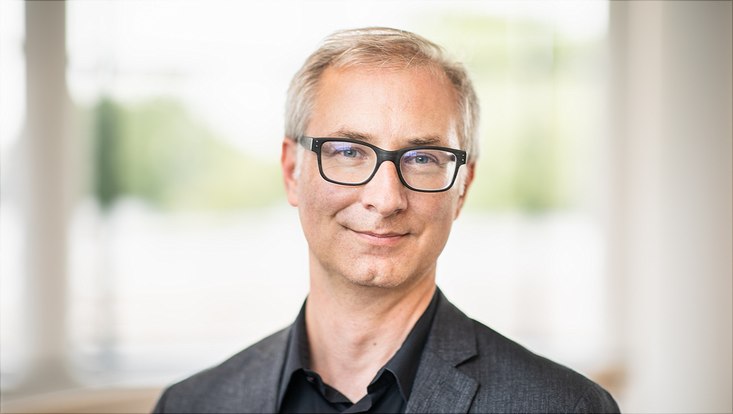Defining needs, identifying potentialWhat Does It Take to Build a Science City?
13 March 2024, by Christina Krätzig

Photo: UHH/Feuerböther
In Hamburg’s west a new research district called Science City Hamburg is being developed. Universität Hamburg has formed part of the original research campus for many years and is now actively involved in the further planning. Jan de Wolff, deputy head of the University’s Campus Development section explains what this means.
Mr. de Wolff, you are an architect and head of the Universität Hamburg site development team for the Science City Hamburg-Bahrenfeld. What exactly does developing this site involve?
As an in-house team it is our job to collaborate with the University stakeholders involved on identifying needs and ensure these are met. How will Physics, Chemistry, or parts of the Biology department evolve in the Science City? Do we need new or different spaces for studies and teaching and where? New labs too? For these assessments we take a close look at the various user groups. Researchers’ and students’ wishes and needs may vary. We must also consider strategic objectives set forth by the University management and Hamburg’s Ministry of Science, Research, Equalities and Districts.
Who decides what new buildings the University can add to the Science City, such as the Hamburg Advanced Research Centre for Bioorganic Chemistry (HARBOR) or the Center for Hybrid Nanostructures (CHyN)?
CHyN and HARBOR are research facilities that convinced in the national competition overseen by the German Science and Humanities Council. These buildings replaced a decommissioned industrial hall that had been used for research purposes—property owner is the Free and Hanseatic City of Hamburg. Whenever we start considering new buildings, we first consult with Hamburg’s Ministry of Science, Research, Equalities and Districts as well as with the Science City GmbH and the Hamburg Ministry of Urban Development and Housing. A justifiable need and a good concept are essential. In the end, the Hamburg Parliament decides which new project can be realized in a specific area.
What other stakeholders are involved?
Alongside municipal partners we are cooperating closely with scientific partners, for example DESY or the Max Planck Society. For large construction projects municipal landlords, such as Sprinkenhof GmbH, come into play. Also involved are the districts, neighborhood initiatives, residents—many different groups.
The abovementioned case focused on a new plan for a previously developed area. But that’s not the rule, is it?
One has to distinguish between the various sections of the Science City. The so-called research campus forms the core of scientific institutions built around DESY since the 1960s, also including Universität Hamburg facilities. This is a developed site, which has room for new buildings on the edges, such as our next major project called Hamburg Fundamental Interaction Laboratory (HAFUN). Also, there is the racetrack area between Volkspark and the research campus—a large open space suited for further development in future. Here, the central task is linking up to the research campus and the city as a research network and neighborhood.
What do you consider the biggest challenge in planning this area?
It is challenging to find the right balance. On the one hand, we must carefully work the University’s needs and tall, highly functional research buildings into a lively suburb. On the other hand, we must leave room for potential future development.
Architects are usually expected to design houses and be involved in the construction process. Is this also part of your job at Universität Hamburg?
My primary focus is on developing the further concept for the Science City Bahrenfeld campus. The construction of the new buildings itself will be put out for tender. Architecture firms from across Europe will then submit proposals. A Danish architecture firm won the HAFUN tender, for example. My colleagues in Project Management for Major Construction Projects and Construction Project Management will supervise the planning and construction phases. Once they have started, my work will be done until the finished projects become integral parts of the Science City campus.


